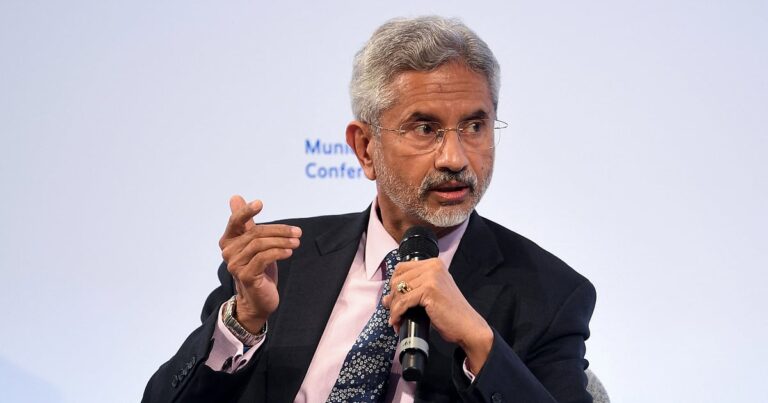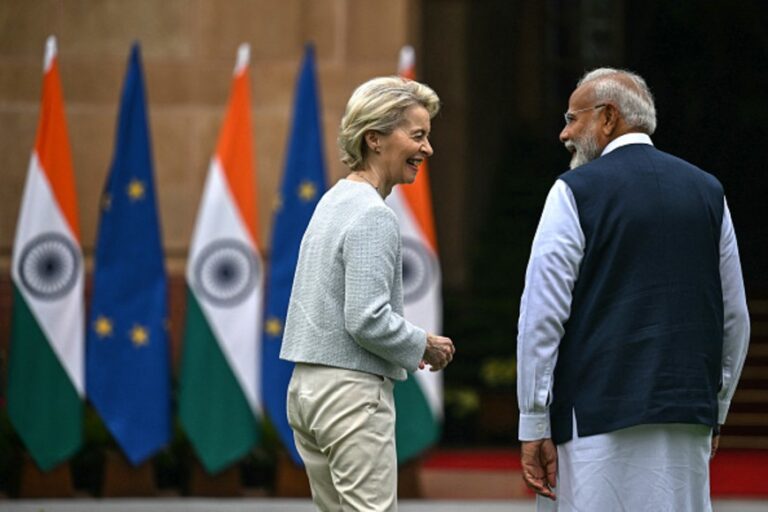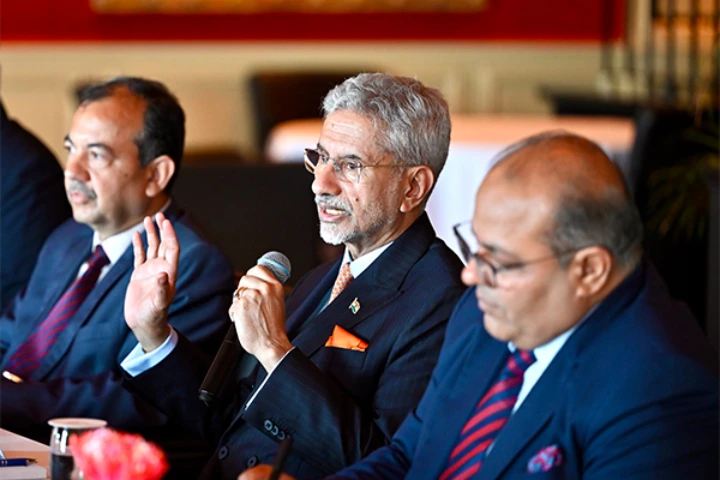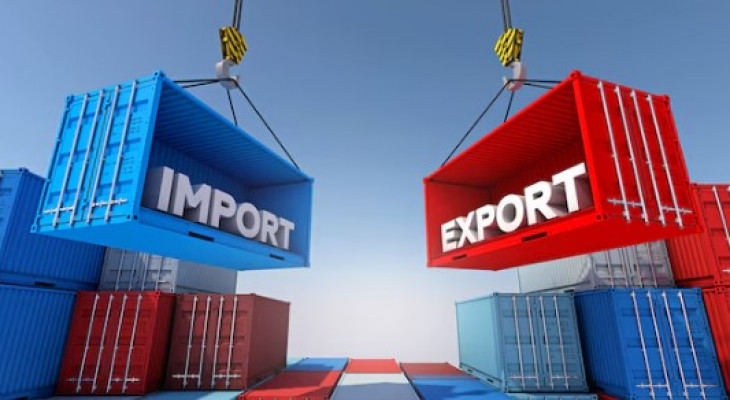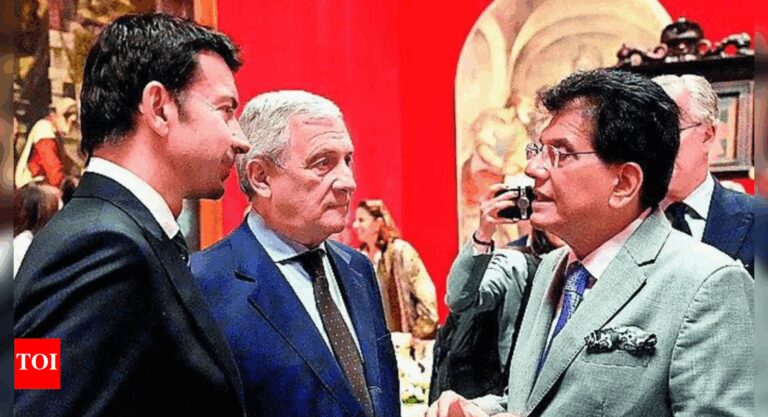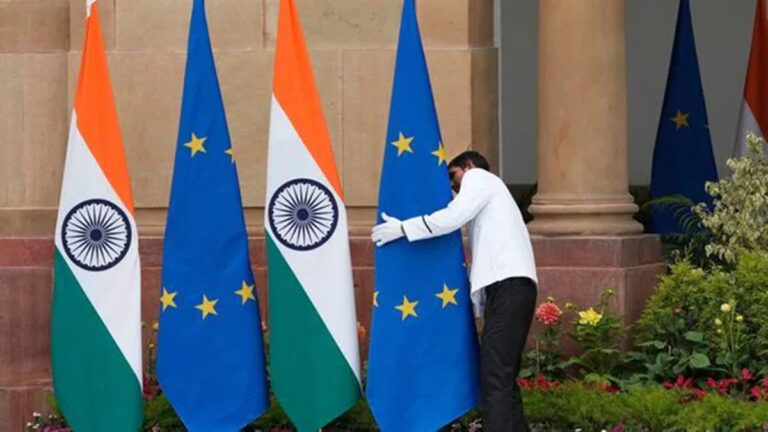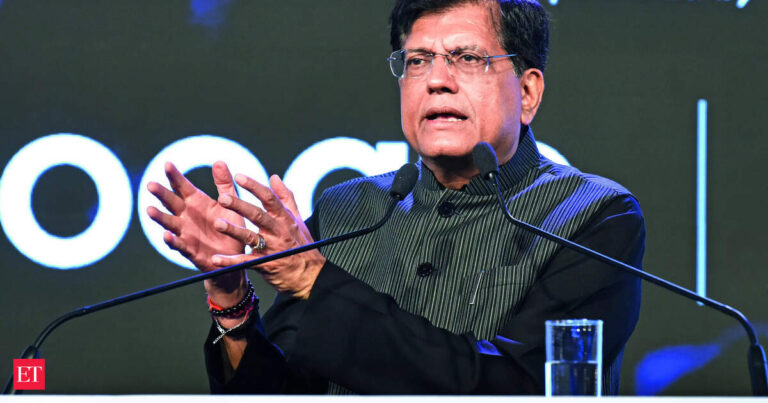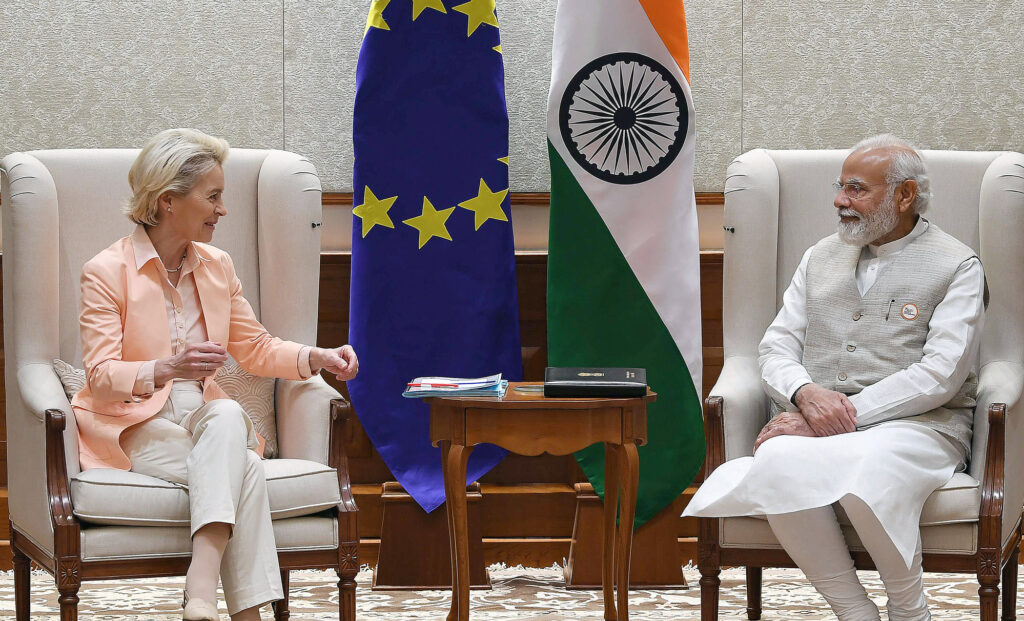
The European Union’s relations with India have long been very promising, but poorly maintained. Speaking in 2022 In New Delhi, the President of the European Commission, Ursula von Der Leyen, welcomed a partnership “at the intersection of trade, reliable technology and security”. However, like the European Parliament As recently highlighted, the EU-India bilateral relationship “has not yet reached its full potential”. To take an example, an important element bilateral summit In recent years, leaders on both sides have chosen to focus on their upcoming elections.
In 2020, the EU launched its “EU-India strategic partnership: a roadmap to 2025“. This strategy now needs to be revived, and their respective elections provide an ideal opportunity to do so. Later this year, a new group of political leaders will arrive in Brussels. A new government will also be in place in New Delhi, but almost certainly still led by Prime Minister Narendra Modi. The recently postponed bilateral summit will then be rescheduled for early 2025. This is an ideal setting to launch a new five-year roadmap, and one that makes a more compelling and geopolitically realistic case for deeper ties between the EU and India, which also address common concerns regarding EU-India relations. rising Chinese power.
Indian foreign policy has undergone a series of major strategic shifts over the past decade, driven by New Delhi’s growing unease with Beijing’s regional influence. To guard against this risk, India has pursued a multi-aligned foreign and security policy. Modi has moved closer to the West, and more particularly to the UNITED STATES but also Indo-Pacific partners like Australia And Japan. Ties with Europe have also deepened, both with Brussels and with EU member states. The pace of improving relations with Europeans, however, has failed to keep up with that of the United States. This is partly because the EU has focused much of its energy on the potential for a EU-India Free Trade Agreement (FTA), and relatively less in other areas of cooperation. However, it would be unwise for Brussels to place too much importance on a possible FTA as a central element of a renewed relationship with New Delhi. Negotiations on this long-delayed trade plan have recently resumed, but they remain at an early and provisional stage, and significant technical obstacles to its implementation remain.
Diplomatically, EU-India ties are still recovering from the latter’s equivocal response to Russia’s invasion of Ukraine in 2022. New Delhi’s insistence on maintaining close ties long-standing with Moscow left many people in Europe frustrated. This irritation went both ways, however. India’s influential foreign minister, Subrahmanyam Jaishankar, chastised the Europeans in 2022 for what he saw as a double standard foreign policy regarding Ukraine. argue that “Europe must stop thinking that Europe’s problems are the world’s problems, but that the world’s problems are not Europe’s problems”.
Shared concerns about China provide a more promising basis for a renewed dialogue between the EU and India. Yet even in this area, both sides have often struggled. Simply put, Europeans feel threatened by Russia, but have often sought a balanced approach towards China, as was clearly evident during World War II. recent visit of German Chancellor Olaf Scholz in Beijing. India’s instinct has been exactly the opposite, feeling threatened by China but seeking to maintain its ties with Russia. Both sides share concerns about strengthening ties between Beijing and Moscow, but they have generally failed to find concrete ways to cooperate to mitigate these threats.
Simply put, Europeans feel threatened by Russia but have often sought a balanced approach towards China. India’s instinct has been exactly the opposite, feeling threatened by China but seeking to maintain its ties with Russia.
Despite this, there remains a significant opportunity for Europe and India to launch a more ambitious partnership, anchored at the same intersection of trade, technology and security as that identified by President von der Leyen in 2022.
In terms of trade, New Delhi is actively seeking new economic partners. It has recently concluded trade agreements with countries such as Australia and the United Arab Emirates, with which it shares core geopolitical interests. He also signed a $100 billion FTA last month with the European Free Trade Association, a four-member bloc. Last year, the EU overtook the United States to become India’s largest trading partner, with a total trade volume of $132 billion (compared to $128 billion between India and the United States). Seen in this light, the potential for a broader EU-India free trade agreement remains considerable, even if it will be extremely difficult to implement in practice. Europeans should redouble their efforts to achieve this.
Shared concerns about China’s threat to economic security provide a clear new rationale for deeper cooperation. New Delhi has a large and growing trade deficit with Beijing. It also remains heavily dependent on Chinese companies for strategically important inputs. In areas ranging from solar panels to electronics, the EU and India would benefit from faster relocation of global supply chains away from China. Greater cooperation in areas such as critical mineral supply chains would be helpful for similar reasons. But to achieve this, we need to focus more on promoting bilateral investments. The Indian economy is growing rapidly and attracting significant foreign direct investment. Yet by 2020, the total stock of EU investments in India had reached a relatively paltry amount. 87 billion eurosor about a third of 263 billion euros invested in Brazil. To address this imbalance, India must act to make its business environment more welcoming to the EU, while European leaders should work to accelerate supply chain offshoring.
Critical and emerging technologies provide a second rationale. The United States has recently reinvigorated its relationship with India with a focus on technology. In 2022, both sides launched the US-India initiative on Critical and Emerging Technology. In theory, the EU should be able to promote similar agreements, under the leadership of the new Trade and Technology Council (TTC), set up by President von der Leyen during her visit to New Delhi in 2022. Yet so far the TTC has struggled to deliver. A higher level of buy-in from both sides could help reinvigorate the project next year, including ensuring a greater focus on the second “T” rather than the first. The recent EU-India 2023 Memorandum of Understanding on Semiconductors provides a useful high-level model for similar cooperation in areas such as quantum computing or synthetic biology.
A final area requiring greater attention is defense and security. Given the EU’s reduced defense capabilities, it cannot hope to match the scale of the United States’ deep defense capabilities. defense cooperation with India. But the EU recently announced plans to develop a new generation defense and security agreement with Japan. Another with South Korea is likely. These agreements underline increased European attention to defense and the rapid development of the EU’s defense and security capabilities following Russia’s invasion of Ukraine. Simply put, the EU is now a more credible global security actor because of its involvement in kyiv’s war effort. Although it would take time to plan and develop a similarly ambitious agreement with India, it could plausibly be concluded as part of a future strategic partnership roadmap through 2030.
There are also other potential new security partnerships. Maritime cooperation in the western Indian Ocean is already well advanced. The EU also offers attractive capabilities in emerging areas such as cyber and space. Ties between China and Russia remain a key mutual concern, which could be the subject of more specific intelligence sharing. The EU will likely create a new defense-focused position within the commission later this year. Following this, the EU and India could create a more traditional “2+2” model for defense and security discussions, in which the EU High Representative and the new Defense Commissioner could meet the Indian Ministers of Defense and Foreign Affairs.
There will of course be obstacles to overcome. European leaders remain hopeful that India will become less dependent on Russia, and signals to that effect from New Delhi would accelerate a deeper partnership. India will remain skeptical about the EU’s relations with China. Europeans also remain nervous about the decline of Indian democracy in recent years, and to what extent this could limit future cooperation. Any future partnership will also have many other important elements, including the crucial green transition, where, among other things, the EU will have to manage the introduction of its new carbon border adjustment mechanism, which has upset many in New Delhi.
Nevertheless, the three areas above – trade, technology and security – provide a solid basis for a renewed partnership between the EU and India. Ultimately, such a partnership must respond to fundamental strategic realities. A truly geopolitical EU would recognize that stronger ties with India can achieve fundamental goals, such as protecting economic security and reducing economic risks amid growing anxiety over Chinese power. Uncertainty about the future of U.S. foreign policy ahead of the 2024 elections should also lead both sides to view deeper mutual ties as a useful geopolitical hedge, allowing each to reduce risks related to their respective relations with the United States. Seen from Brussels, these brutal geopolitical realities should provide the rationale for an EU-India relationship whose potential finally matches the results.
The European Council on Foreign Relations does not take a collective position. ECFR publications represent solely the opinions of their individual authors.
